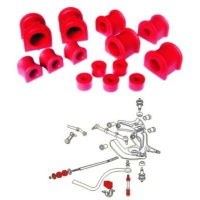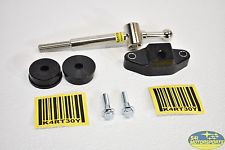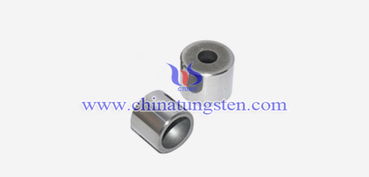Understanding the Shifter Link Bushing: A Comprehensive Guide
The shifter link bushing is a critical component in the transmission system of many vehicles. It plays a pivotal role in ensuring smooth gear shifting and overall performance. In this detailed guide, we will delve into the various aspects of the shifter link bushing, including its function, types, installation, and maintenance. Let’s explore this essential part of your vehicle’s transmission system.
Function of the Shifter Link Bushing

The shifter link bushing is a rubber or polyurethane component that connects the shifter linkage to the transmission. Its primary function is to provide a cushioning effect, reducing vibrations and noise during gear shifting. This component ensures that the shifter linkage moves smoothly and accurately, allowing for seamless gear transitions.
Types of Shifter Link Bushings

There are several types of shifter link bushings available for different vehicles and applications. Here are some of the most common types:
| Type | Description |
|---|---|
| Rubber Bushing | Traditional rubber bushings are the most common type. They are durable and cost-effective but may wear out over time. |
| Polyurethane Bushing | Polyurethane bushings offer increased durability and resistance to wear compared to rubber. They are a popular choice for high-performance vehicles. |
| Steel Bushing | Steel bushings are the most durable option, providing excellent resistance to wear and tear. However, they can be more expensive and may require professional installation. |
Installation of the Shifter Link Bushing

Installing a shifter link bushing is a relatively straightforward process, but it requires attention to detail and the right tools. Here’s a step-by-step guide to help you through the installation process:
- Locate the shifter link bushing on your vehicle. It is typically located between the shifter linkage and the transmission.
- Remove the old bushing by prying it out with a screwdriver or socket set. Be sure to wear gloves to protect your hands.
- Apply a small amount of lubricant to the new bushing to ensure smooth installation.
- Insert the new bushing into the mounting location, ensuring it is properly seated.
- Secure the bushing in place using the appropriate hardware, such as bolts or clips.
- Test the shifter linkage to ensure it moves smoothly and accurately.
Maintenance of the Shifter Link Bushing
Maintaining your shifter link bushing is essential to ensure its longevity and optimal performance. Here are some tips for maintaining your bushing:
- Regularly inspect the bushing for signs of wear or damage. If you notice any issues, replace the bushing as soon as possible.
- Keep the area around the bushing clean and free of debris. This will help prevent premature wear and ensure smooth operation.
- Use high-quality lubricants to maintain the bushing’s integrity. Avoid using harsh chemicals or solvents that could damage the bushing material.
Benefits of Replacing the Shifter Link Bushing
Replacing your shifter link bushing can offer several benefits, including:
- Improved gear shifting: A properly functioning bushing ensures smooth and accurate gear transitions.
- Reduced noise and vibrations: A worn-out bushing can cause increased noise and vibrations, which can be uncomfortable and distracting.
- Extended component life: Replacing a worn-out bushing can help prevent damage to other transmission components.
Conclusion
The shifter link bushing is a vital component in your vehicle’s transmission system. By understanding its function, types, installation, and maintenance, you can ensure optimal performance and longevity. Regularly inspect and replace your shifter link bushing as needed to keep your vehicle running smoothly.

















